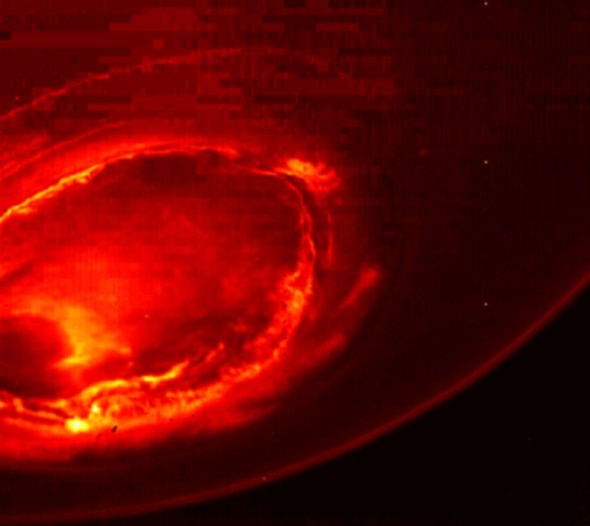Create a free profile to get unlimited access to exclusive videos, sweepstakes, and more!
Jupiter, the (Surprising and Weird) King of the Planets

Jupiter is the second brightest planet by eye in the solar system, and by far the largest. Countless astronomers—including me—have observed it through telescopes, making it one of the best-studied objects in the entire sky.
And yet, it still surprises us.
Ironically, that itself is not a surprise. If there’s one thing we’ve learned when we study planets up close and in a different way, we’ll always be surprised by what we find. Always.
The Juno spacecraft entered orbit around Jupiter in July 2016. Its mission is to study the interior of the huge planet, to find out how Jupiter was born, and help us understand what the solar system was like when it was young.
To do this, it was sent on a long, looping path that takes it over the poles of the planet, an orbit that’s “on its side” instead of going around Jupiter’s equator. At perijove—closest approach to the planet—it’s a mere 4,500 kilometers above the cloudtops. That’s terrifyingly close; Jupiter is 140,000 kilometers in diameter, so Juno really does skim right over the planet’s clouds.
This gives it a tremendous view of the poles. Juno can look down on the planet, if you will, a view we literally cannot get from Earth. And what it saw was, frankly, bizarre.
Now, we’re used to seeing Jupiter looking striped; the bands of light and dark clouds stretching all the way across the disk. But as you can see here, the banding is muted (except nearer the equator, seen near the planet’s edge); what dominates the shot are huge, mottled storms looking more like earthly hurricanes. Why is the polar region so much less banded than equatorial regions? The Coriolis effect is less there, so maybe that has something to do with it. Or perhaps there’s more upper atmospheric haze at the extreme latitudes, hiding any striping. Most likely it’s something else entirely.
Perhaps the most stunning view of all was from Juno’s infrared camera. The image at the top of this article shows the south pole of Jupiter, and while it might look like Sauron’s eye, it’s actually the planet’s aurora australis: the southern aurora! Jupiter’s magnetic field is incredibly powerful, far more than Earth’s, and produces intense auroral activity. The image shows hydrogen atoms glowing at 3 to 3.6 microns, well outside human vision. Jupiter’s magnetic field catches high-speed particles from the Sun’s solar wind like nets trawling for fish. The particles are then accelerated to ridiculously high speeds and channeled down to the planet’s poles. They slam into the gas there, exciting it, making it glow.
These images of the aurora give astronomers insight into Jupiter’s magnetic field, the gas at its poles, and the interaction between the two. The magnetic field is generated deep in Jupiter’s interior, so understanding it means better understanding the planet’s guts, too.
The particles also generate radio waves, and these can be detected by another of Juno’s instruments. While radio is actually a flavor of light, it can be converted to sound (that’s how radios work, after all). If you do that to the auroral emissions, what you get is … well, listen for yourself.
Holy. Yikes. Creepy. But those radio waves are again helping astronomers probe the planet, getting a better grasp of how it behaves.
After all, if Jupiter is going to go to all that trouble to sing to us, the least we can do is listen.
Juno has only completed one orbit of Jupiter, and it’s already sent back a trove of treasures for us. The next orbit will bring it back to perijove in October. It’ll fire its engines then, changing the shape of its orbit, keeping it closer on average to the gigantic planet. The better to see it by, of course. There’s much we don’t know about Jupiter, even though we’ve watched it for centuries. Juno will happily provide us with the tools to turn those mysteries into knowledge.
Watching Jupiter from afar is lovely and wondrous. But there’s no substitute for being there.


























